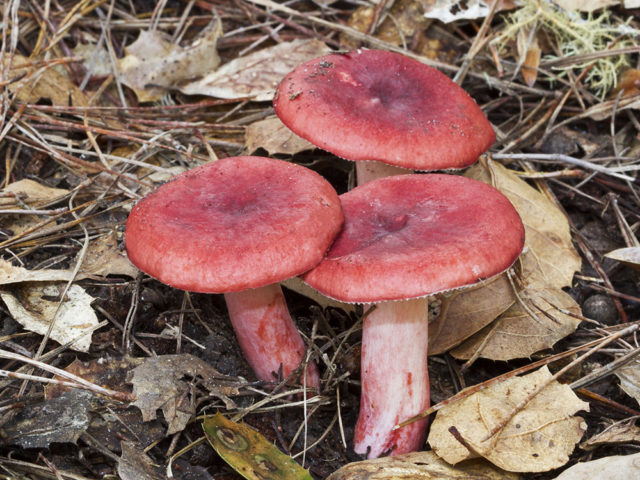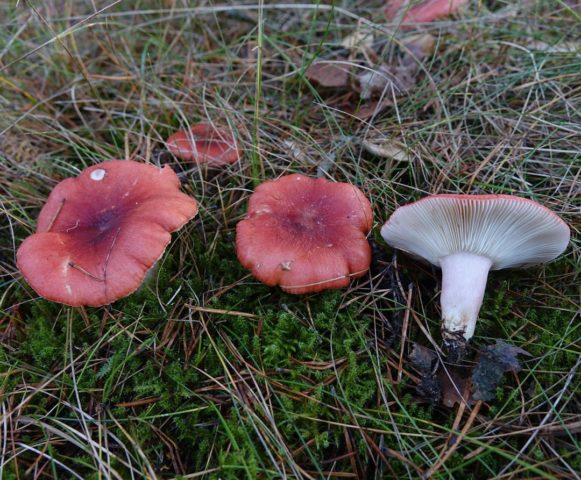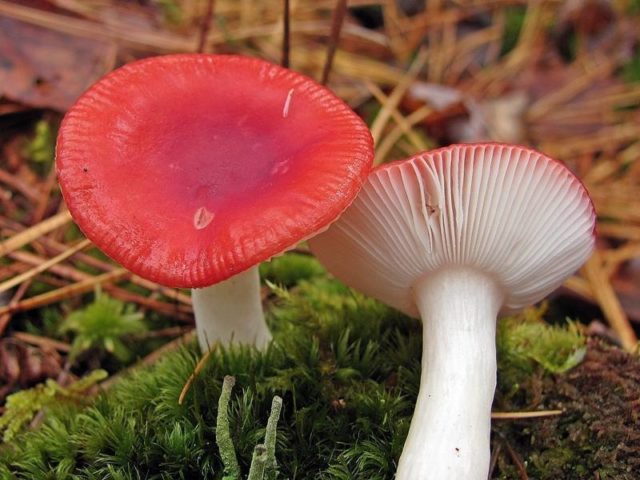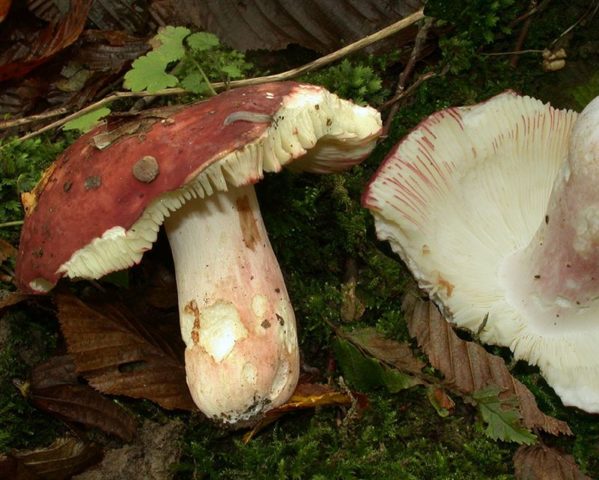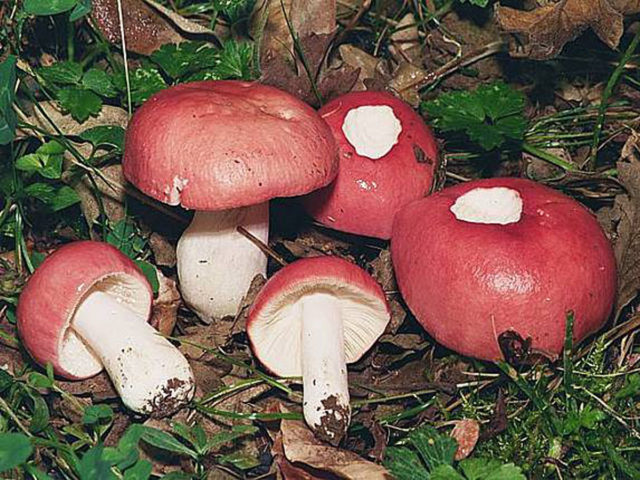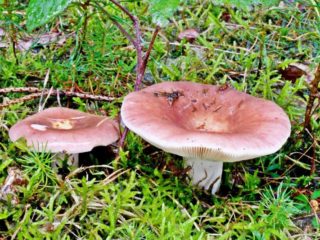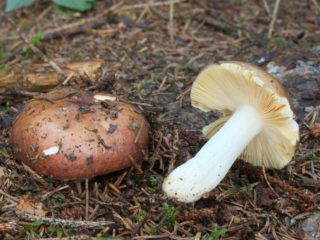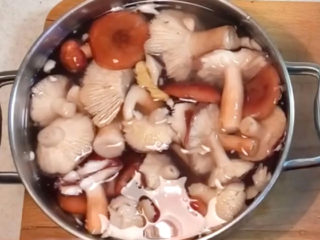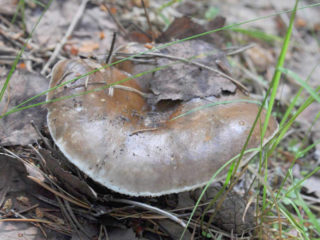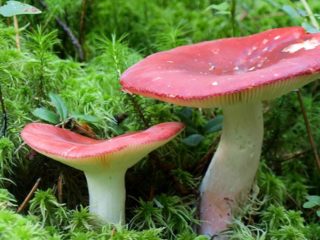Content
Pink russula is a conditionally edible mushroom that is found in Russia. It is also known as beautiful and pink russula. In the scientific literature, the species is called Russula lepida, or Russula rosacea. Despite its mediocre taste, it is popular among mushroom pickers.
Where do pink russulas grow?
The variety is found in Eurasia and North America. Prefers deciduous forests, but can also grow under coniferous trees. It is often found in mountainous regions and on hillsides.
The most active fruiting is observed in rainy summers. Warm weather also promotes mushroom growth.They love partial shade and enter into symbiosis with deciduous trees and conifers. They are collected in clearings, forest edges, next to forest paths and ravines.
Pink russulas grow solitarily, but often form groups. They develop best in well-drained soil. They do not grow in swampy areas or in areas that are prone to flooding in spring or after rains.
It is not recommended to collect mushrooms near highways, factories and other industrial facilities. Harmful substances can accumulate in the pulp: heavy metal ions and radionuclides. Therefore, they go to ecologically clean regions to pick mushrooms.
What beautiful russulas look like
According to the photo and description, the pink russula consists of a cap and a stem. The mushroom got its name due to its pinkish color. In young specimens it is hemispherical in shape. As it grows, the shape becomes convex and a depression appears in the center. The cap takes on a flatter outline, but does not turn into a funnel.
The color range of the mushroom is varied: from soft pink to bright red. In the central part the color is more intense. The size of the cap varies from 3 to 11 cm.
The mushroom belongs to the lamellar category. Under its cap there are frequent plates. They branch and intertwine with each other, but are located freely. The light beige colored plates often have a reddish tint near the stem.
The leg itself is large and powerful. In shape it resembles a club with a thickening near the base, and near the cap it becomes cylindrical. The upper part of the leg is white, below it has a pink undertone and reddish veins.
The pulp of pink russula is light, dense, but very fragile. When exposed to high humidity, it becomes gray in color. The aroma of this species is unusual, reminiscent of mint and fruit. Its spore powder is beige, with spherical spores.
Are pink russulas edible or not?
Pink russulas are part of the group of conditionally edible mushrooms. This includes varieties that can be used for food. They are pre-treated: soaked in water and boiled for 20 - 30 minutes. The liquid must be drained after cooking. It contains toxins that are removed from the pulp during heat treatment.
Pink russulas are suitable for home canning. It is best to pickle mushrooms for the winter. The boiled mass is added to various dishes. It is placed in the freezer for storage.
Taste qualities of pink russula
Pink russulas are not considered a delicacy. Their taste is quite mediocre. The pulp has a bitter taste. To get rid of it, boil the mass over low heat for a long time.
Benefits and harms
Russula contains vitamins B, C and E. The pulp of mushrooms is rich in amino acids, potassium, calcium, magnesium, and phosphorus. This is a low-calorie product that is added to the diet menu. 100 g of it contains 19 kcal. The pulp contains protein, which is well absorbed by the body.
Eating pink russula benefits the body:
- hemoglobin increases;
- swelling goes away;
- blood vessels are strengthened;
- Sleep is normalized and fatigue is relieved.
At the same time, mushrooms are heavy food for the stomach. When including russula in the menu, be sure to follow the norm - no more than 150 g per day. If this amount is exceeded, the functioning of the gastrointestinal tract is disrupted.The product is not recommended for use by children and women during pregnancy and breastfeeding.
The first signs of poisoning are abdominal pain, vomiting, diarrhea, and weakness. When such symptoms appear, the victim is given activated carbon or another sorbent. In case of russula poisoning, it is recommended to drink more warm water and perform gastric lavage. Afterwards you can seek medical help.
False doubles of russula with a pink cap
Pink russula has doubles that do not taste good. Some varieties are poisonous and cause poisoning. Therefore, when picking mushrooms, pay attention to the shape and color of the cap, as well as other distinctive features.
The most common doubles:
- Russula emetica, or russula is pungent and pungent. The main difference is the intense, bright red color of the cap. An inedible specimen that has a bitter taste. Young mushrooms have a convex cap. Then it grows and becomes flat, with a funnel in the center. Its size is 5 - 9 cm. The leg is white or pinkish, cylindrical in shape. The pungent variety forms mycosis on deciduous and coniferous trees.
- Russula amarissima. A species of russula that grows only under beech trees. It has a faint fruity aroma. Its pulp has a very bitter taste. The hat is wide, dark red. The plates are frequent, white with pink veins. The leg is large, white with a pink coating.
- Russula pseudointegra, or ruddy russula. The mushroom is found in oak forests, sometimes growing under other deciduous trees. Adult specimens have yellowish plates. The pulp has a very bitter taste. The hat is spherical, bright pink. The leg is cylindrical, with a visible thickening near the base.
How to cook pink russula
Pink russulas are eaten after heat treatment. First, the fruiting bodies are cleared of forest debris: moss, branches, leaves, soil. They are then placed in water to soak. The mass is boiled over low heat to get rid of the bitter taste.
Boiled mushrooms are added to soups, sauces, side dishes, salads, and pie fillings. They are combined with meat, chicken, rice and vegetables. The product is fried, boiled, baked and stewed. It is better to pickle them for the winter. To do this, mushroom raw materials are placed in salt water for 2 - 3 hours. During this time, bitter juice will come out of the pulp. Then the mass is placed in a jar, 3 tbsp is added. l. salt and fill with water.
Conclusion
Pink russula is a mushroom that is eaten only after processing. This variety, distinguished by its unusual pink color, is used for making soups, sauces, and side dishes. For these mushrooms they go to deciduous or coniferous forests, be sure to check clearings, clearings and other areas located in partial shade when collecting.
